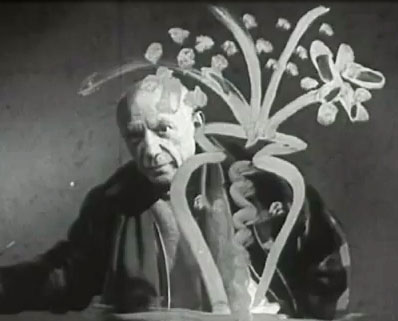
John Jeremiah Sullivan's interactive piece in the NYT Magazine (photo: Alex van der Tuuk Archives) [h/t: Todd Weeks]:
IN THE WORLD of early-20th-century African-American music and people obsessed by it, who can appear from one angle like a clique of pale and misanthropic scholar-gatherers and from another like a sizable chunk of the human population, there exist no ghosts more vexing than a couple of women identified on three ultrarare records made in 1930 and ’31 as Elvie Thomas and Geeshie Wiley. There are musicians as obscure as Wiley and Thomas, and musicians as great, but in none does the Venn diagram of greatness and lostness reveal such vast and bewildering co-extent. In the spring of 1930, in a damp and dimly lit studio, in a small Wisconsin village on the western shore of Lake Michigan, the duo recorded a batch of songs that for more than half a century have been numbered among the masterpieces of prewar American music, in particular two, Elvie’s “Motherless Child Blues” and Geeshie’s “Last Kind Words Blues,” twin Alps of their tiny oeuvre, inspiring essays and novels and films and cover versions, a classical arrangement.
Yet despite more than 50 years of researchers’ efforts to learn who the two women were or where they came from, we have remained ignorant of even their legal names. The sketchy memories of one or two ancient Mississippians, gathered many decades ago, seemed to point to the southern half of that state, yet none led to anything solid. A few people thought they heard hints of Louisiana or Texas in the guitar playing or in the pronunciation of a lyric. We know that the word “Geechee,” with a c, can refer to a person born into the heavily African-inflected Gullah culture centered on the coastal islands off Georgia and the Carolinas. But nothing turned up there either. Or anywhere. No grave site, no photograph. Forget that — no anecdotes. This is what set Geeshie and Elvie apart even from the rest of an innermost group of phantom geniuses of the ’20s and ’30s. Their myth was they didn’t have anything you could so much as hang a myth on. The objects themselves — the fewer than 10 surviving copies, total, of their three known Paramount releases, a handful of heavy, black, scratch-riven shellac platters, all in private hands — these were the whole of the file on Geeshie and Elvie, and even these had come within a second thought of vanishing, within, say, a woman’s decision in cleaning her parents’ attic to go against some idle advice that she throw out a box of old records and instead to find out what the junk shop gives. When she decides otherwise, when the shop isn’t on the way home, there goes the music, there go the souls, ash flakes up the flue, to flutter about with the Edison cylinder of Buddy Bolden’s band and the phonautograph of Lincoln’s voice.
I have been fascinated by this music since first experiencing it, like a lot of other people in my generation, in Terry Zwigoff’s 1994 documentary “Crumb,” on the life of the artist Robert Crumb, which used “Last Kind Words” for a particularly vivid montage sequence. And I have closely followed the search for them over the years; drawn along in part by the sheer History Channel mysteriousness of it, but mainly — the reason it never got boring — by their music.
Outside any bullyingly hyperbolical attempts to describe the technical beauty of the songs themselves, there’s another facet to them, one that deepens their fascination, namely a certain time-capsule dimension.
More here.
Sam Sacks at Open Letters Monthly:

